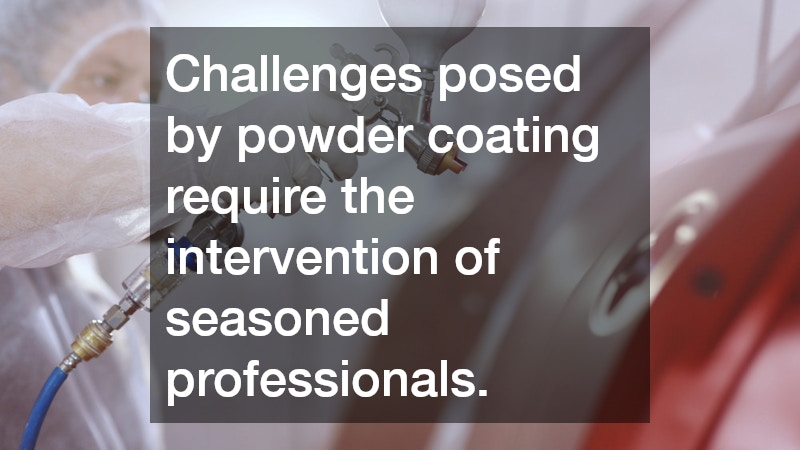Common Powder Coating Problems and How A Professional Company Solves Them
This article explores the frequently encountered issues in powder coating applications and how a professional powder coating company can expertly resolve them using advanced techniques and equipment. Understanding these problems and their solutions can enhance the quality and longevity of coated surfaces.
What Causes Powder Coating Defects and Imperfections?
Identification of Common Defects
Powder coating is a popular finishing process known for its durability, but it comes with potential defects such as orange peel, pinholes, and poor adhesion. These imperfections often arise because of issues like incorrect curing temperatures, moisture in the air, or poor substrate preparation.
Orange peel, which refers to a textured appearance similar to that of an orange skin, is a common defect and often results from incorrect application techniques or equipment settings. Pinholes can form when air or moisture gets trapped underneath the coating, leading to tiny eruptions on the surface as it cures.
Poor adhesion is another significant concern, primarily caused by improper cleaning or treating of the substrate prior to applying the powder coat. Professional companies often encounter these defects, recognizing that they can severely affect the aesthetic appeal and functional quality of the final product.
Preventative Measures and Professional Solutions
To minimize the occurrence of these defects, professional powder coating companies conduct thorough assessments to identify potential problems in the process. By closely monitoring environmental conditions and adequately preparing substrates, they significantly reduce issues like pinholes and adhesion failures.
Professionals employ advanced testing equipment and methods to control temperature, humidity, and other environmental parameters, ensuring optimal curing conditions. Moreover, by maintaining strict quality control throughout the production line, these coatings can reliably achieve a smooth and durable finish.
Furthermore, professionals often utilize high-end equipment to ensure even powder deposition, minimizing the likelihood of visual defects such as orange peel. Their expertise in understanding the unique characteristics of each project allows them to devise bespoke solutions that effectively address potential defect sources.
Why Does Powder Coating Peel Off and How Can It Be Prevented?
Understanding Adhesion Failures
Adhesion failures in powder coating can lead to catastrophic peeling, compromising both the appearance and protection of the coated object. Such failures typically occur due to insufficient surface cleaning before coating or the presence of oils and contaminants that prevent proper bonding.
Environmental factors like high humidity and temperature fluctuations can also exacerbate these issues, leading to peeling over time. To address these challenges, professional companies focus on refining each step of the process, from substrate cleaning to powder application and curing.
Regular inspections and tests are conducted to ensure that all surfaces are adequately prepared and free from substances that could interfere with the powder coat’s adhesion. By understanding the chemistry of powder coating and the impact of environmental variables, professionals execute precise application techniques that prevent these common issues.
Professional Techniques to Ensure Lasting Adhesion
Professionals employ specialized surface pre-treatment techniques such as sandblasting or chemical etching to enhance the substrate’s readiness for powder coating. These processes effectively remove impurities and create a texture that promotes stronger physical and chemical bonds between the surface and powder coat.
Moreover, the application process involves using advanced spraying equipment that can consistently apply a uniform layer, ensuring even coverage and preventing peeling. Close monitoring of curing procedures, including temperature and time, guarantees that the powder coat fully adheres, thus reinforcing the coating’s durability.
Through continuous research and adoption of emerging technologies, professional companies enhance their approach to powder coating, thus offering surfaces that exhibit excellent resistance to peeling and superior longevity. Their commitment to maintaining stringent process standards ensures that the coatings remain intact under various stress conditions.
How Do Professionals Resolve Powder Coating Color Mismatches?
Causes of Color Mismatch
Color mismatches in powder coating are undesirable yet common issues that occur due to variables like batch inconsistencies, equipment malfunction, and incorrect curing parameters. Such discrepancies can result in unsightly and unprofessional finishes that undermine the intended design aesthetics.
In some instances, deviations in gun settings or changes in the powder application process can lead to color differences across the coated surfaces. Professionals recognize these challenges and work tirelessly to identify and mitigate the factors contributing to color mismatches.
An understanding of color science and the interplay between various factors affecting the coating process is crucial for resolving these inconsistencies. By implementing precise controls and regular tests, a professional company can ensure color uniformity and consistency throughout the application.
Professional Color Matching and Correction Methods
To achieve accurate color matching, professionals use sophisticated spectrophotometers and color analysis software that allow for precise adjustment of the powder formulation. This ensures that any color mismatch is quickly identified and corrected through careful tweaks to the mixture or application techniques.
Moreover, professionals employ standardized procedures and rigorous testing to evaluate color accuracy both before and after the curing process. Such diligence helps maintain consistency, avoiding the noticeable transitions that would otherwise mar the aesthetic quality of the product.
Through experience and expertise, these companies have mastered the art of aligning customers’ expectations with the practical realities of powder coating technology, delivering vibrant, consistent, and long-lasting colors. Their use of cutting-edge technology and techniques represents a commitment to excellence in every aspect of the coating process.
Conclusion
In conclusion, the challenges posed by powder coating—ranging from defects and peeling to color mismatches—require the intervention of seasoned professionals who apply advanced techniques and keen attention to detail. By investing in expert services, individuals and businesses can ensure high-quality, aesthetically pleasing, and durable finishes that stand the test of time.
Professionals bring a wealth of knowledge and experience to the table, implementing strategies that prevent defects and address issues before they escalate. Their proactive approach and rigorous quality control measures underscore the value of expertise and technology in resolving powder coating problems effectively, ensuring optimal results.

